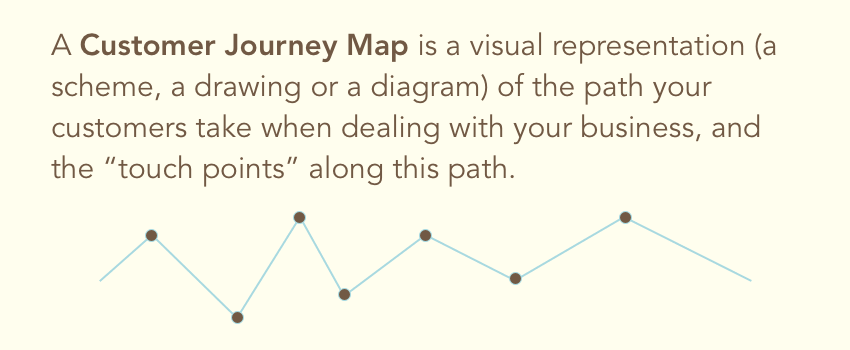UX Cafe: Using Customer Journey Maps to Improve User Experience

This post is part of our UX and web design series.
Negative user experiences sink deep into your memory.
Just recently, I was placing an order on an unfamiliar website (I wanted a product for the environmentally-conscious, for which there aren’t many vendors). Surprisingly, the checkout form asked me only to provide my cell number – no email – and there were no instructions as to what I should do once I’ve placed the order. Should I wait for a text? Call them up or wait for them to call me?
No text or phone call ensued, so I dialed the number written at the top of the page. They said they were just about to call me back. I said there was no way I could have known that. Everything went smoothly after that, but still, I think it’s a good example of a company that hasn’t given much thought to how customers interact with their business.

Having a customer journey map helps you prevent situations like this one. It also helps you set the right expectations at each step of the “journey” and deliver on them promptly.
Before you start
Before you plan for a big fun customer journey plotting event, there are a few things to do. You’ll need certain information to do the planning.
- Buyer personas *
- Customer demographics data **
- Support ticket logs
- Click maps for your website ***
- Customer satisfaction survey results
- Frequently asked questions from social media
- Issues raised in email communications, etc.
* If you haven’t defined your buyer personas yet, here’s a helpful guide from Shopify to the rescue.
** You can get these data from Google Analytics, the CRM you’re using, or elsewhere.
*** Services like MouseFlow and Yandex Metrica allow you to play back sessions on your website, which may help expose the problems people have when interacting with your site.
The template
Now I’m going to share with you a template you can use to put together a customer journey map for your product or service.
Who should you invite to the plotting game? Well, whoever may have the necessary insights. The more viewpoints you hear out, the better. It is really awesome if you can invite some customer representatives and have them validate your map!
Now, this template is not the ultimate one out there. It’s hard to create a one-size-fits-all model in this case, because each business is different. For the sake of this post, let’s say you are a small, family-owned pizza shop in Rome that wants to attract more business from tourists. Here’s a possible customer journey map for your little restaurant called Osteria D’Angelo.
Persona – Jeremy Liparoto
Age – 53
Lives in – New Jersey, U.S.A.
Income – $40K to $60K year
Occupation – SMB
Story – Jeremy is an American of Italian descent. He and his family have long planned this trip to Rome to visit the land of their ancestors. He wants an authentic Italian experience. He’s spent a great deal of money on this trip already, and wants to avoid spending on things he doesn’t need/could get in the U.S. He’d be willing to pay for a unique experience, though. He also secretly cherishes the idea of being able to brag about it once he comes back home.
Likes – Good food and wine.
Leisure – TV, fishing, barbecue with friends and family. He also reads print newspapers and is relatively comfortable using the iPhone.

What’s next?
Next, you should periodically revise your customer journey map. At critical moments when your business grows, restructures, or adds new services – you should plot the customer journey anew.
Another question you may have is – how do I use this info-heavy map?
Use it for improving your website. Use it when you’re putting together guidelines for your customer service folks. Use it when training anyone who personally services your customer or processes their order. Make sure your marketers and salespeople are aware of the map.
In short, just think, “Who are the people responsible for each touch point?” See to it that they have a good understanding of the customer’s journey.